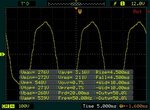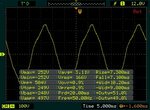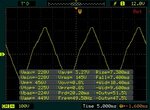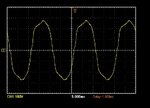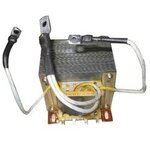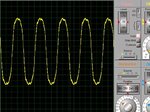hariecengg
Junior Member level 1
Hi ,
I am designing a spwm inverter using PIC16f877a . I completed this project and getting output from transformer. The output voltage I am getting is 230V AC.
i am not using sg3525 for high voltage 300vdc to 230vac conversion . The high side mosfet of drain is connected to battery +12V/150Amp and low side mosfet of sources are connected to ground(-12V).
Now for testing purpose i am using IRL3713 mosfet for Hbridge .Totally i am using 8 mosfets(2 pairs for High and 2 pairs for low side) totally. The transformer rating is 12V-0-12V/230V/800W . Because of Hbridge i connected mosfets output to 2 wires that is (0 -12v) i left the 3rd winding wire open
What problem i am having now is not getting output more than 150 or 200w. Is this problem can be solved by paralleling more mosfets.if i have to parallel mosfets how many mosfets i have to parallel or how many mosfets totally i needed to get 800w output.
First i connected 25w CFL bulb the output voltage is 210V . if i connect 100w incandescent bulb the output voltage falls to 160v what causing this issue ?
I cant able to find in which place causing the problem. For your info how i designed is from microcontroller the output is given to tc427 from tc427 the outputs are given to corresponding pins of IC IR2110.From the ir2110 the signals are applied to mosfet gates. I checked signals in oscilloscope everything is good..but why my output is always low not getting more than 200W . Second problem is at 100w i am seeing nice sine wave in oscilloscope but for 200W it turns to triangular like waveform. the output filter capacitor i used is 2.2uf/400v..
Help me to solve these problems and suggest me idea
Thank you,
I am designing a spwm inverter using PIC16f877a . I completed this project and getting output from transformer. The output voltage I am getting is 230V AC.
i am not using sg3525 for high voltage 300vdc to 230vac conversion . The high side mosfet of drain is connected to battery +12V/150Amp and low side mosfet of sources are connected to ground(-12V).
Now for testing purpose i am using IRL3713 mosfet for Hbridge .Totally i am using 8 mosfets(2 pairs for High and 2 pairs for low side) totally. The transformer rating is 12V-0-12V/230V/800W . Because of Hbridge i connected mosfets output to 2 wires that is (0 -12v) i left the 3rd winding wire open
What problem i am having now is not getting output more than 150 or 200w. Is this problem can be solved by paralleling more mosfets.if i have to parallel mosfets how many mosfets i have to parallel or how many mosfets totally i needed to get 800w output.
First i connected 25w CFL bulb the output voltage is 210V . if i connect 100w incandescent bulb the output voltage falls to 160v what causing this issue ?
I cant able to find in which place causing the problem. For your info how i designed is from microcontroller the output is given to tc427 from tc427 the outputs are given to corresponding pins of IC IR2110.From the ir2110 the signals are applied to mosfet gates. I checked signals in oscilloscope everything is good..but why my output is always low not getting more than 200W . Second problem is at 100w i am seeing nice sine wave in oscilloscope but for 200W it turns to triangular like waveform. the output filter capacitor i used is 2.2uf/400v..
Help me to solve these problems and suggest me idea
Thank you,
Last edited by a moderator:
